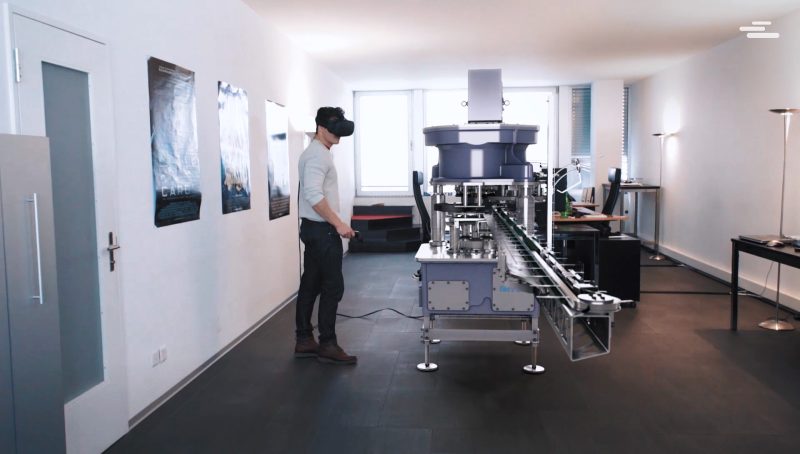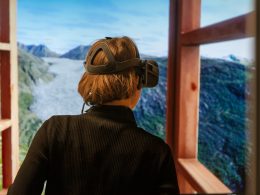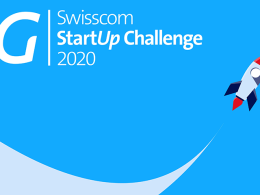We spoke to Patrick Baumann, partner and consultant at Cloudscape GmbH talked about the use of VR and AR in the advertising sector.
Why are you as an agency interested in VR/AR and where do you see possible potential?
As a service provider for 3D animation, but also in the field of video post-production and visual effects, it is our job to bring our customers' ideas to life for others. Virtual reality is the perfect medium for this. Never before has it been possible to immerse oneself so intensively in another world or to present a product so comprehensively and up close in virtual form. For our customer, for example, we were able to Ferrum bring several industrial machines to life.
Can't that also be done with a normal video, which would be much less time-consuming?
Even with the best video, you can't convey the feeling of standing on top of a mountain or having a living dinosaur in front of you. The proportions cannot be captured correctly and there is always a distance between the display and the viewer.
Depending on the content and interaction options, the effort required is comparable to a 3D animation. AR and VR applications even have the advantage that they can be expanded more easily and modularly. This means that functions and content can also be added at a later date. We are also seeing a strong development in computer graphics away from "slow" offline rendering towards the increased use of real-time graphics. The visual quality of current real-time engines is increasingly comparable with complex offline renderers, but with the great advantage of real-time processing, which allows faster creative processes.
This change makes VR and AR even more interesting for us, especially as we can use the content we create across platforms.
What is more interesting for you as a Visual Studio, VR or AR?
As we are primarily active in the advertising sector, we quickly recognised the current limitations of VR productions: You still have a very small range at the moment. Only a few people have the right equipment at home and only one person at a time can put on the headset at trade fairs or at the point of sale. The social aspect is somewhat lacking, especially as you are usually alone in the experience.
In this respect, augmented reality is more promising. Most people already have a suitable end device in the form of a modern smartphone and specific hardware such as HoloLens or the announced Magic Leap also show that fully immersive experiences in AR are not far away. With the latest technologies from Apple and Google, which were launched on the market last year, another milestone has been reached for AR and the applications are no longer tied to markers or specific locations. This opens up previously unseen and exciting application possibilities.
When I look around my circle of acquaintances, I get the feeling that people are still barely aware of the new technologies and their possibilities. What experiences have you had?
We also see that still surprisingly few people have come into contact with "real" VR. Even in our industry, most people only mean simple Google Cardboard applications and 360° videos when they talk about VR. We therefore regularly invite small groups of interested parties to our premises so that they can have a full VR experience in an informal demo.
Who is allowed to enjoy such a demo with you?
Advertising agencies, film producers and industrial customers are all welcome. We hope that this will open up further areas of application, because if creative agencies don't know how the medium works, they won't be able to find a use for it. And the decision-makers at industrial customers also need to experience the medium properly in order to recognise its great potential.
Anyone who has ever used an HTC Vive or an Oculus Rift knows that you have to try it out for yourself to understand it.









